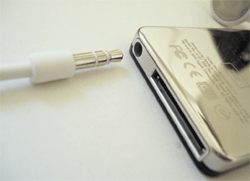Young people are familiar with this technology and have made it part of their everyday life, so can it really be ignored?
For businesses like my own, recognising that students need content for these devices has been pivotal. However, as I work with more and more schools who are embracing the use of this technology as part of their students’ learning experience, I now realise that the benefits of using it are far greater than we first imagined.
Mobile technology is helping to introduce a level of creativity and independent learning into the classroom like never before. Far from ‘dumbing down’ the education process, as has been suggested by some in the ‘don’t’ camp, the use of this technology is helping to create a generation of independent thinkers. This generation utilises technology and information available to them to enhance their own learning experience, by seeking out information that is appropriate to them and their individual learning needs, where the real issue is one of accessibility and signposting to what is needed at any given time.
From art students taking photographs of their work at various stages of development to be shared with their fellow pupils, to students in science lessons filming experiments – the use of this technology is extremely versatile.
The beauty of this technology is that it can draw on so many different forms of information; from a range of quality commercially produced content to teacher produced or pupil created material. It allows students to take control of their own learning through effective resourcing and the ability to collaborate effectively with others.
Schools that have embraced consumer technology have not done so lightly. Whilst there may be a few advocates in the schools, there has inevitably been cynicism and doubt from other members of staff and often parents.
Schools I have worked with who have successfully welcomed technology have done so with the support of their teaching staff, parents and students. It has been a learning process, a fundamental step change for many teachers.
The truth is, in some cases, the students will know more about the technology and its capabilities than the teacher will. This understandably leaves some teachers feeling nervous and lacking in control, which is a huge hurdle to overcome.
Dominic Tester, Assistant Headteacher at Costello Technology College in Basingstoke and freelance education ICT consultant, is well aware of this situation. Having decided not only to allow consumer technology into the classroom, he has encouraged its widespread use by installing a wi-fi cloud in the school via a managed wireless solution so that students can access the Internet on their handheld devices. The school has therefore had to ensure that all of its staff were on board and could support the school’s innovative approach to learning.
Tester acknowledges that some of his members of staff needed time and support to understand the capabilities of the technologies and, more importantly, to have the confidence to recognise that they needn’t know the intricacies of the devices.
He also refers to the cost effectiveness of such technologies, highlighting that schools are under increasing budgetary constraints and are all tasked with making what they have to hand work harder for them.
Whilst ownership of iPods and smart phones continues to increase amongst year 10 and year 11 students, schools encouraging their use as an educational tool are still mindful of the need for inclusivity and the need to provide access to those students without their own devices. Some schools are going so far as to provide all their GCSE students with their own personal devices. Whereas others, a much greater percentage, have introduced curriculum loaded content iPods into their school libraries for students without their own devices to loan as they would books.
Our own research indicates that teenagers are far more likely to listen to or view something that they have downloaded on to a handheld device such as their iPhone or iPod than they are from the Internet or on a computer, so schools who enable their students to use their handhelds to both create their own content and download content via the schools’ own VLE are, in our opinion, on to a sure thing.
As the number of schools adopting this approach continues to grow, it would seem we are not alone in our thinking that those in the ‘don’t’ camp may well find that they ‘do’ soon.
Read more...
- Dominic Tester's personal blog: http://blog.digeratidom.com
- Browse the Innovate My School mobile phone apps directory


















